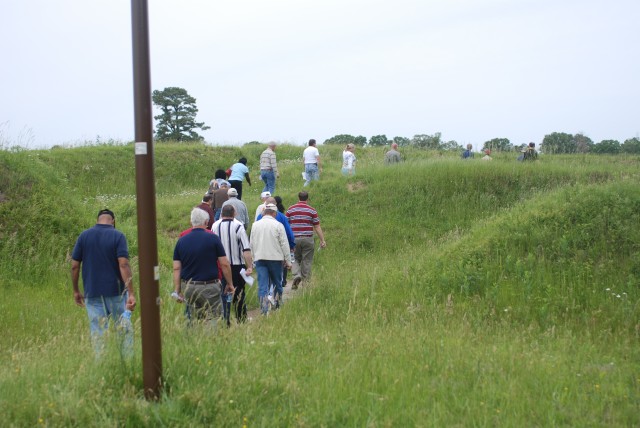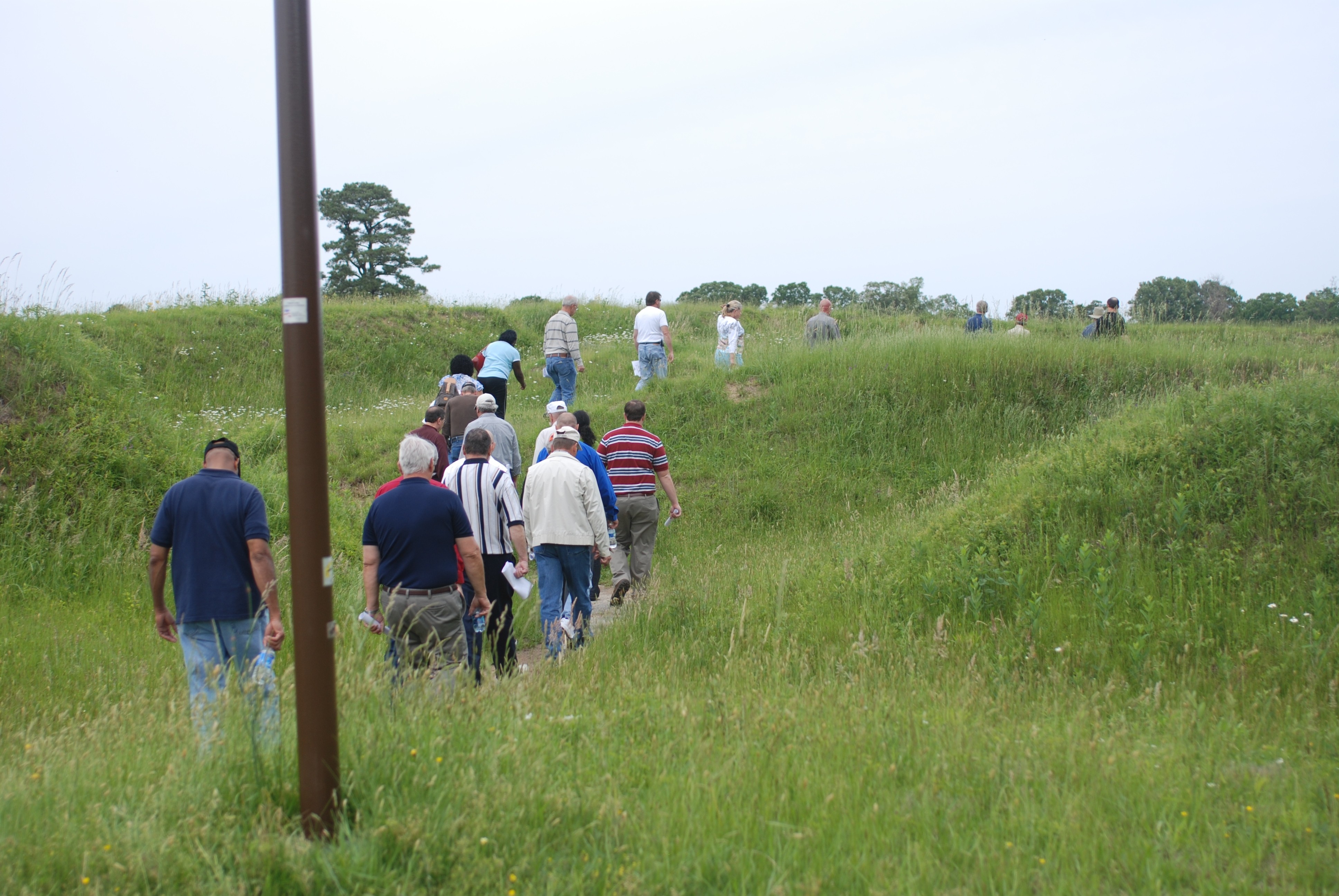YORKTOWN, Va. (TRADOC News Service, May 16, 2008)-Taking an afternoon out of the first Joint Training and Doctrine and Forces Command Safety Professional Development Seminar, 23 TRADOC and FORSCOM safety officers were brought to the fields of Yorktown, where over two centuries ago, the final battle of the Revolutionary War had taken place.
TRADOC/FORSCOM Safety Professional Development Seminar gave the opportunity for officers, civilians and key decision makers to discuss current issues that pose a threat to safety of our troops and those they serve. A variety of safety topics, from practices to administrative processes was covered in the week-long conference held in Hampton, Va. as well as a staff ride to the historic Siege of Yorktown site.
Led by TRADOC Historians, Dr. Britt McCarley and Ben King, the staff ride to Yorktown allowed safety officers a chance to walk the routes of American soldiers and understand the military and political environment that these soldiers operated in, with heavy emphasis on risk management, the pervading theme of the conference.
From September to October of 1781, The Siege of Yorktown was the last battle in the Revolutionary War that led to surrender and negotiations. The American forces, led by Gen. George Washington and backed by Gen. Comte de Rochambeau and the French troops, finally defeated the British led by Gen. Charles Cornwallis who also had Hessian support.
"Why did Cornwallis come here'" asks McCarley, standing at the York River's shoreline. "His primary reason for being here was to put deep water at his back because the British Navy controlled the waterways to a point." Cornwallis, at this point, had left the Carolinas and started to build the redoubts, or fortified positions, the summer of 1781. This would soon turn against the British once the French took control of the York River shortly after. The British did not foresee that they would be cut off from their leaders in New York and by doing so, did not consider a risk that would come into fruition.
Another response to risk management came through the attitudes of the Soldiers. Regarding the French's role in combat, King said, "We talk a lot about risk management. We're in a situation now where everyone says, 'To hell with risk management, I want to go.' The reason the French are here is to take a crack at the enemy. They want their share of glory and they want their share of honor. ... And in this case, we're talking about high ranking French aristocrats." Seeing this attitude as a risk, Gen. Pierre Dupont released explicit orders to keep digging earthworks and the trenches that would let them close in on the British. This would prove to be pivotal in the victory.
Cornwallis had two redoubts placed adjacent to each other at a very strategically significant location, they lacked the manpower to fight the French and American troops at the final battle.
"You can't be everywhere at once in equal strength at central locations to mitigate the risk that the French and Americans posed, so he has to be weak some places, strong in others and doubles up on the redoubts, I think, to protect the exposed or potentially dangerous avenues of approach for the French and Americans," explained McCarley.
As Cornwallis saw the risk the French and Americans posed, he maneuvered his troops around the redoubts and in a way that would create a larger challenge for the French and Americans. Their 7,500 men were not enough to hold back Washington and Rochambeau's 16,000 and Cornwallis was forced to surrender.
An elaborate system of trenches, earthworks and redoubts marks evidence of where America's forefathers stood, fighting their way to become their own. As the safety officers took the Siege of Yorktown tour, they received a big-picture look at what posed as risks for the troops and how they were managed during the Revolutionary War. As a sign of things to come for safety officers, David Prentice, Director of TRADOC Safety and Occupational Health said, "Everything in the Army, in safety, is going toward the risk management approach. ... Risk management provides a decision making process to weigh the level of risk to the potential gain and make informed decisions." Staff rides provide opportunities to learn from fellow Soldiers.


Social Sharing